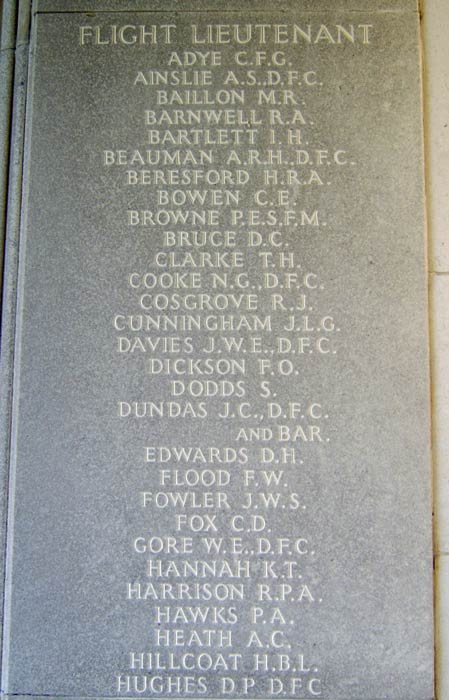The Airmen's Stories - F/O J C Dundas
John Charles Dundas, of Cawthorne, Yorkshire, was born on 19th August 1915, the son of Frederick James Dundas (1877-1950) and Silvia Mary Dundas (nee March-Phillipps 1891-1976).
He attended Stowe School on a scholarship. He was awarded another scholarship to Christ Church, Oxford where he gained a First in Modern History. He also won an award which took him to study at the Sorbonne and Heidelberg.
Dundas subsequently became a journalist on the Yorkshire Post and was sent to Czechoslovakia in 1938 to cover the Munich Crisis. He also covered a subsequent conference in Rome where Mussolini met Prime Minister Chamberlain and Lord Halifax, the Foreign Secretary.

Dundas joined 609 Squadron, Auxiliary Air Force in 1938. He was called to full-time service on 24th August 1939. In operations over Dunkirk Dundas destroyed a He111 and shared a Do17 on 31st May 1940 and damaged a He111 on 1st June.
He claimed a Me110 destroyed on 13th July, another on the 19th, two more Me110s on 11th August and 12th August, a Ju87 and another shared on the 13th, a Do17 destroyed and a He111 shared on the 14th, a probable Me110 on the 25th, a Do17 shared and another damaged on 15th September, a Me110 destroyed and a Do17 damaged on the 24th, a Do17 destroyed on the 25th, a Me109 destroyed and a Do17 damaged on the 26th, a Me110 destroyed on the 27th, a shared Me110 on 7th October and a Me110 on the 15th.
Dundas was awarded the DFC (gazetted 22nd October 1940).
On 27th November he probably destroyed a Ju88 and on the 28th he destroyed a Me109 flown by Major Helmut Wick off the Isle of Wight. Almost immediately Dundas was himself attacked by Wick's No. 2 and shot down after being chased out to sea. He was not seen again.


Dundas was 24. He is remembered on the Runnymede Memorial, Panel 4. He was awarded a Bar to the DFC (gazetted 7th January 1941). His portrait was made twice by Cuthbert Orde (above).
His younger brother, Hugh Dundas, also served in 609 Squadron and survived the war.

Above image courtesy of Dean Sumner.
************

************
September 2020
Frank Matthewman writes in the Barnsley Chronicle:
Readers who read Emma Shepherd's piece about local Battle of Britain hero John Dundas might be interested in this anecdote.
During the battle John was ordered to collect a new Hawker Hurricane fighter from RAF Finningley.
He telephoned his parents at Dale House, in Tivy Dale, Cawthorne, to ask his father to get the commanding officer of the Kings Royal Rifle Corps battalion camped in the park to clear the army vehicles from the bypass in order that he could land his aircraft on the highway.
He flew in the next morning coming into land near the village green and taxied to the Toll Bar end where he had coffee with his delighted mother and father at Dale House whilst a party of willing villagers turned his Hurricane around.
John took off and flew back to his 609 Squadron in the south of England. He was shot down a few days later and killed near the Isle of Wight, his body was never recovered.
Thousands of present day drivers would never in their wildest dreams when motoring on the A635 think that 80 years ago the bypass had been used as a runway for an RAF hero piloting a Hurricane fighter.
Thanks to Derek Housely for the above.
|